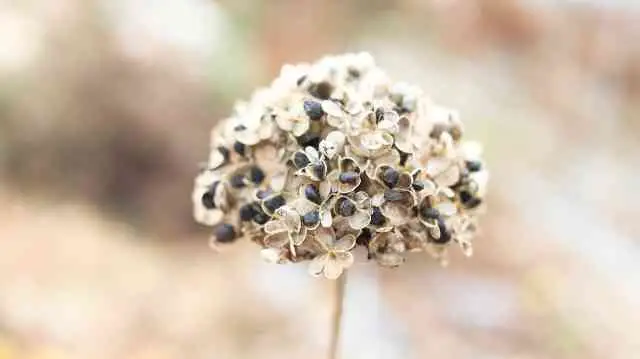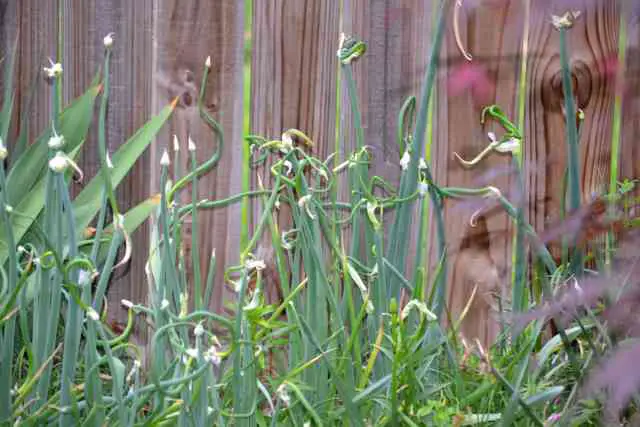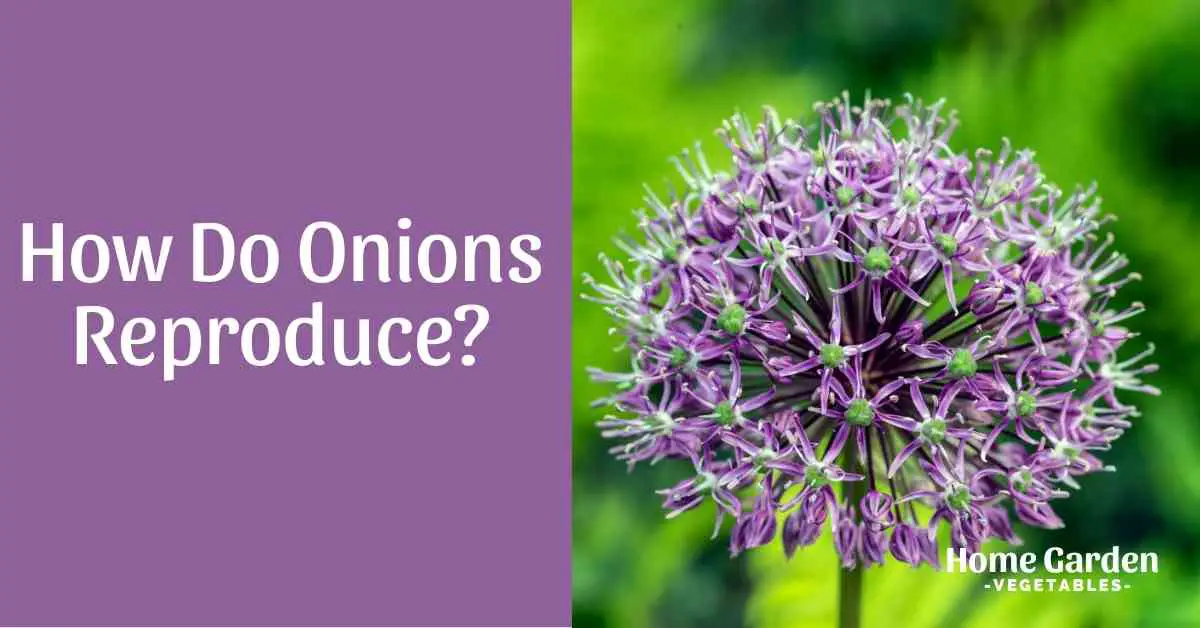Onion, also called common onion or bulb onion belongs to the genus allium and is one of the most widely cultivated vegetables on the planet. Though you can’t imagine cooking without onions, have you ever stopped to wonder where an onion comes from? How do onions reproduce?
Continue reading, and you’ll learn all about how we continue getting a fresh supply of onions each season.
Reader Poll: What online courses would interest you?

Are Onions Sexual Or Asexual?
Onions can reproduce both sexually and asexually. Sexual reproduction is through seeds, while asexual reproduction (or vegetative propagation) is the multiplication of vegetative parts to grow new onions.
Sexual reproduction requires the formation of flowers, the role of pollinators to produce seeds and seed dispersal to produce a new plant. Asexual reproduction does not involve these steps and is, therefore, much simpler. In addition, it will produce plants that are identical to the parent plant since there’s no possibility of cross-pollination. Plants produced from asexual reproduction reach maturity much faster. Additionally, the offspring produced asexually from adult parts of the plant are much sturdier than seedlings produced by seeds.
Propagation By Seeds – Sexual Reproduction

Onions, or Allium Cepa, are biennial plants. They form bulbs during their first year of growth. When cultivated for commercial production, onions are harvested for bulbs at the end of the first growing season. The bulbs carry nutrients that are required for flower and seed development. If left to grow in the ground further, the plants will form a flower stalk during their second year of growth. This is called bolting.
Subscribe to our newsletter!
Once the inflorescence with the umbel of white flowers develops at the tip of the flowering stalk, pollination by insects is required to set seeds. The flower clusters last for 4 weeks and are best pollinated by flies since honey bees aren’t too fond of the nectar on onion flowers. The seeds have a triangular crosssection and are glossy black in color.
Seeds can be harvested and stored for propagating onions in the next season. You can also purchase onion seeds from the nursery, garden centers or online retailers. In fact, it’s cheaper to grow onions from seeds than with onion sets. On the downside, onions grown from seeds will take longer to reach harvest.
Ways For Asexual Reproduction
Onion is among the few plants that can also reproduce asexually. There are different methods of asexual reproduction of onions. Take a look:
- Offsets From Tunicate Bulbs
Onions are tunicate bulbs. Tunicate bulbs are concentric layers of leaves where the outer layer dries to form a protective tunic or covering. Tunicate bulbs can self-propagate by giving offsets. The offsets are produced from the base of the bulb belonging to the parent plant. When you leave them in the ground, they form dense colonies, but bulbs will be deformed and smaller in size than expected since space is limited.
Gardeners can harness this reproductive quality by digging up the offsets and transplanting them with suitable spacing to grow more onions. When propagating onions from offsets, absolutely no further investment is needed since you won’t be buying anything.
- Bulbils

An intriguing variety is the Egyptian onion (Allium cepa proliferum). Also known as walking onions, top-setting onions and tree onions, these varieties don’t form flowers or seeds like the common bulb onion. Instead, they form clusters of small red bulbs (bulbils) on the tips of the leaves. When harvested and planted in a growing medium, these bulbils will readily form roots and grow into new, independent plants.
If you leave them on the top of the parent plant leaves, the leaves will droop over with the weight of the bulbils as they increase in size and weight. When the leaves bend to the ground, bulbils will take root as soon as they come in contact with the soil. This is how they will naturally propagate into new plants, hence the name ‘walking onions’ since they tend to walk around the garden. The bulbils are best planted in the fall for overwintering. When given a longer growing season, they will produce bigger, mature bulbs. All the parts of Egyptian onions, including the green tops, bulbils and underground bulbs, are edible.
What Are Onion Sets?
Though you’ve learned multiple ways for onion reproduction, the most common means of propagating onions is from onion sets. So what are onion sets, and how do these fall into the picture?
Onion sets are actually small, immature onion bulbs that will grow to maturity once you plant them in the ground. They are grown from seeds during the previous growing season and harvested and stored as soon as they start to form bulbs. In the following growing season, these are sold at nurseries, where gardeners purchase them to start an onion crop. The benefit of growing from sets is the time you save for seed germination and bulb formation. Sets will mature faster into full-sized bulbs than those that are grown from seeds.
Onion Transplants
Other than saving seeds from existing onion plants, propagating them from divisions or planting onion sets, you can also purchase onion transplants from the nursery. These are young onion plants or seedlings, 8 to 10 weeks of age, dug out of the ground and sold at nurseries. Onion transplants are either grown from seeds or propagated by division by cultivators. Once they are rooted in a growing medium, transplants will continue to grow into mature onion plants.
Conclusion
How do onions reproduce? Now you know the different ways in which new onions are produced from the old ones. You also found out the different ways in which you can propagate them in your garden. While many gardeners prefer growing onions from sets since it’s easier and faster, you can also try growing seeds to explore some exciting, new flavors.

